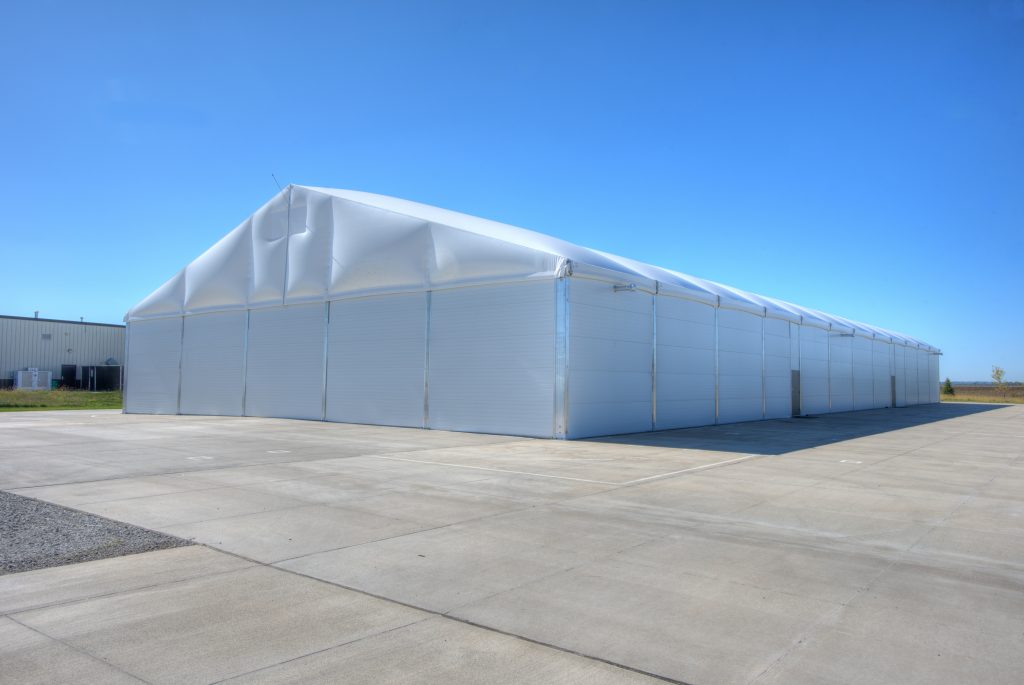Great Ideas For Your Temporary Warehouse Management
Tips On Managing A Temporary Warehouse
When you manage a temporary warehouse, your responsibilities and duties can range from evaluating and supervising employees to many other things such as distributing merchandise, storage, inventory control, receiving, purchasing and shipping. Running a productive, safe, and efficient warehouse is a multi-faceted job, however, there are certain guidelines that you can follow to make sure you do an outstanding job and protect your merchandise and employees at the same time.

Make Temporary Warehouse Safety A Top Priority
1. Keep Your Warehouse Organized, Neat, & Clean
Walkways and aisles should be free of debris and spills. Do not allow merchandise or boxes to be left in the walkways where individuals might trip on them. All inclines, vehicle lanes, and pedestrian walkways should have highly visible floor markings to alert people in the area.
2. Ensure All Areas Have The Proper Lighting
Workplace safety and alertness will be promoted by bright lights to keep employees aware of their surroundings and awake. Make sure to immediately replace any light bulbs that go out and that the temporary warehouse does not have any dark areas.
3. Train Employees On All Of Your Warehouse Safety Practices
All of your temporary warehouse employees should go undergo training sessions on warehouse safety standards. Have written confirmation that they have received the proper training. Improper material handling causes many injuries, so there should be a heavy focus in your safety program on the proper ways to reach for, pick up, and carry heavy objects. A section should also be included on loading dock safety, which includes keeping your doc area free of any obstructions and limited the height of pallets that are stacked.
4. Ensure That Your Employees Who Use Mechanical Equipment Receive The Proper Training
Any employee who operates temporary warehouse equipment – shrink wrappers, lifters, electric stackers, mechanical loaders, forklifts, etc. – need to be fully trained in how to properly use them, and if necessary, be certified.
5. Enforce Your Safety Regulations
These rules are designed to help avoid employees becoming injured and depriving you of skilled workers. Make sure to enforce your safety regulations. Place reminder signs in the appropriate places and punish employees who disregard safety rules on a regular basis. Don’t make exceptions for anyone who violates the safety rules.
6. Perform Safety Checks On A Regular Basis
Ensure everything is up-to-date at all times. Plan regular loading dock, equipment, machinery and vehicle inspections and maintenance to keep everything in good working order at all times.
Managing Your Temporary Warehouse Employees
1. Communicate Clearly With Your Employees
In order to run a temporary warehouse operation successfully, you need to listen to your workers and respond to them. Consider having an open-door policy in place so that employees can come to you with any concerns or questions they have. You also can allow workers to use a comments box for making anonymous suggestions or comments. That will allow you to be able to deal with any employee complaints before they turn into serious issues.
2. Interview Qualified Candidates
Search for prospective employees who conduct themselves in a professional manner and who have the required skills for the job. After you have several applicants, make your hiring decision based on the interviews and applications.
3. Train New Employees
After hiring a new employee, they might need some help getting started. That might involve doing some of the training yourself or supervising their training. You might want to give them a tour of the warehouse and introduce them to the supervisors they might be working with.
4. Provide Performance Reviews & Feedback
Meet with all of your employees on a regular basis and review their performance. It is an opportunity for encouragement and growth. Discuss an employee’s strengths with them and reward excellent behavior and performance. Discuss area that the employee can improve, address bad behavior or any weaknesses, and come up with a plan for improvement with the employee.
5. When Necessary, Fire Employees
It is never easy to let go of employees, but good managers recognize when it is necessary to do so. The important thing is for a manager to fire an employee in a professional way and to do the actual firing herself or himself.
6. Keep Up With All Current Employment Laws
Compensation and workplace regulations change on a frequent basis. Therefore, it is very important to keep up with changes and then implement them as quickly as possible. Be sure to look for any changes in federal or state laws that could relate to your employees or warehouse. Subscribing to a trade magazine might help you follow the changes more closely.
Overseeing All Of The Temporary Warehouse Operations
1. Develop An Efficient & Consistent Organization System
As a temporary warehouse manager, your main goal is to ensure that the proper products go to the place they need to go and when they are needed there. To save on the amount of time that employees spend on search for products, get a logical organizational system created that can be easily used and interpreted. To begin with, the most-moved products should be placed in an area that is easy to access, like the middle of the warehouse. Also, products should be grouped near one another that are often shipped together.
2. Make The Picking Process More Efficient
Gathering products, or picking them into shipments, can take up a significant amount of employees’ time. However, it is also possible to make changes to the picking process to make it faster and more efficient. For example, if you ship large orders on a regular basis to a couple of key customers, you might want to organize pick lists so you have similar items grouped together. If you have smaller orders going out to a large group of customers, set things up so that your pick lists are group, and then the products are divided later.
3. Get An Inventory Management System Established
Ideally, any time an item is moved it should be recorded and include all relevant information, such as product code, product status, and time. You can implement an effective management system through using barcodes or RFID tag that are linked with an inventory management software program. Ensure that all of your employees are trained throughout on how to use your inventory management system.
4. Visually Inspect The Storage Areas On A Regular Basis
Walk around the temporary warehouse and ensure that the storage areas contain the right products and are neatly maintained.
5. Meet With Key Staff On A Regular Basis
Organize weekly or monthly meetings with your upper-level important staff members. That includes supervisors and managers of temporary warehouse purchasing, storage, and inventory.
6. Make Changes Whenever Necessary
In order for your temporary warehouse to continue to run smoothly, you might need to make changes to product movement or storage processes. Take the time about every six months to assess your individual processes and storage area. Note the areas where improvements can be made.
Review Pick Up and Delivery Operations
1. Coordinate Drivers & Trucks Carrying Merchandise Into And Out Of Your Temporary Warehouse So That They Function Smoothly
Coordinate departing and arriving trucks to promote your loading docks being used efficiently. It is easier to do this if specially designed software is used. That doesn’t mean immediately purchasing a full-service program. There are programs that handle just shipping and delivery coordination. Before choosing a program, use free-trial offers first.
2. Arrange The Schedules Of Your Employees So There Are Enough Handlers That Are Available For Loading & Unloading Trucks
That might require you planning to have additional employees when you have large shipments to take care of.
3. Organize The Receiving Process
Enough merchandise receivers and checkers should be assigned to each shift to compare the invoices with received merchandise and to check the merchandise’s condition upon arrival. bE sure your staff knows how to handle damaged shipments. Make sure that received products are shelved quickly in order to avoid discrepancies between what is on the shelves and the received shipment records.
4. Control The Quality Of Shipments
Have controls implemented to check the products’ quality before they leave your temporary warehouse? Have a system organized so that any incorrectly packed or defected items are inspected and then taken out of the shipment before it leaves your warehouse. That can help to prevent expensive returns from occurring.
5. Track Your Shipments
Customers want to know when their products will be arriving and where they are. It will help you deal with missing packages as well. Get shipment tracking implemented with your shipping service and check the tracking for accuracy on a regular basis.
Find out more by contacting us and visiting our blog. Feel free to call us today if you need assistance!
We are continually proud to offer our clients superior material, craftsmanship, and structurally sound clear span buildings.
CONTACT US TODAY
For more information or a quote, please contact us. Find out how Temporary Warehouse Structures can help with your next project.

